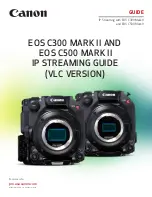
V1.02
Thom Hogan’s Complete Guide to the Nikon D300
Page 658
camera’s meter turns OFF (
STBY
is displayed on the
flash’s LCD). A light press on the shutter release turns the
D300’s light meter back ON, and the SB-800 turns ON at
the same time.
Note: The SB-800 has a “special” No Standby mode that can be
set, as well as the ability to set different time-out values (80,
160, 300 seconds). Like the other flash command mode
settings, you get to this function by holding the
Sel
button
down for two seconds and then navigating the options with
the Direction pad on the flash.
• After the flash fires, an icon may appear in the flash’s LCD
along with a value. This indicates potential
underexposure. This indicator only appears for three
seconds after the shot.
• The Rear Sync option must be selected on the camera.
(Some earlier flash units had this selection on the flash, so
I’ve included this note here just in case folks who
previously had one of those Speedlights are wondering.)
• While the SB-800 has “click stops” for commonly used
flash head positions (45, 60, 75, and 90 degrees for tilt,
every 30 degrees for rotation), you aren’t restricted to
those positions. Setting an intermediary position is
allowed (though it can easily be dislodged).
• Viewfinder Ready Light Warnings (blinking) occurs in the
following conditions:
- When you press the shutter release halfway and the SB-
800 is not correctly mounted on the hot shoe.
- After the flash fires at full power, indicating possible
underexposure.
Flash Troubleshooting
Problem
: Your SU-4 doesn’t seem to trigger the remote flash
correctly in TTL mode.
Solution
: The D300 is not compatible with the SU-4 in TTL
modes. Nikon states that you must set the triggering flash unit
to Automatic (A) flash mode. That’s not 100% correct. You
can use FV Lock to get around the preflash prematurely
















































